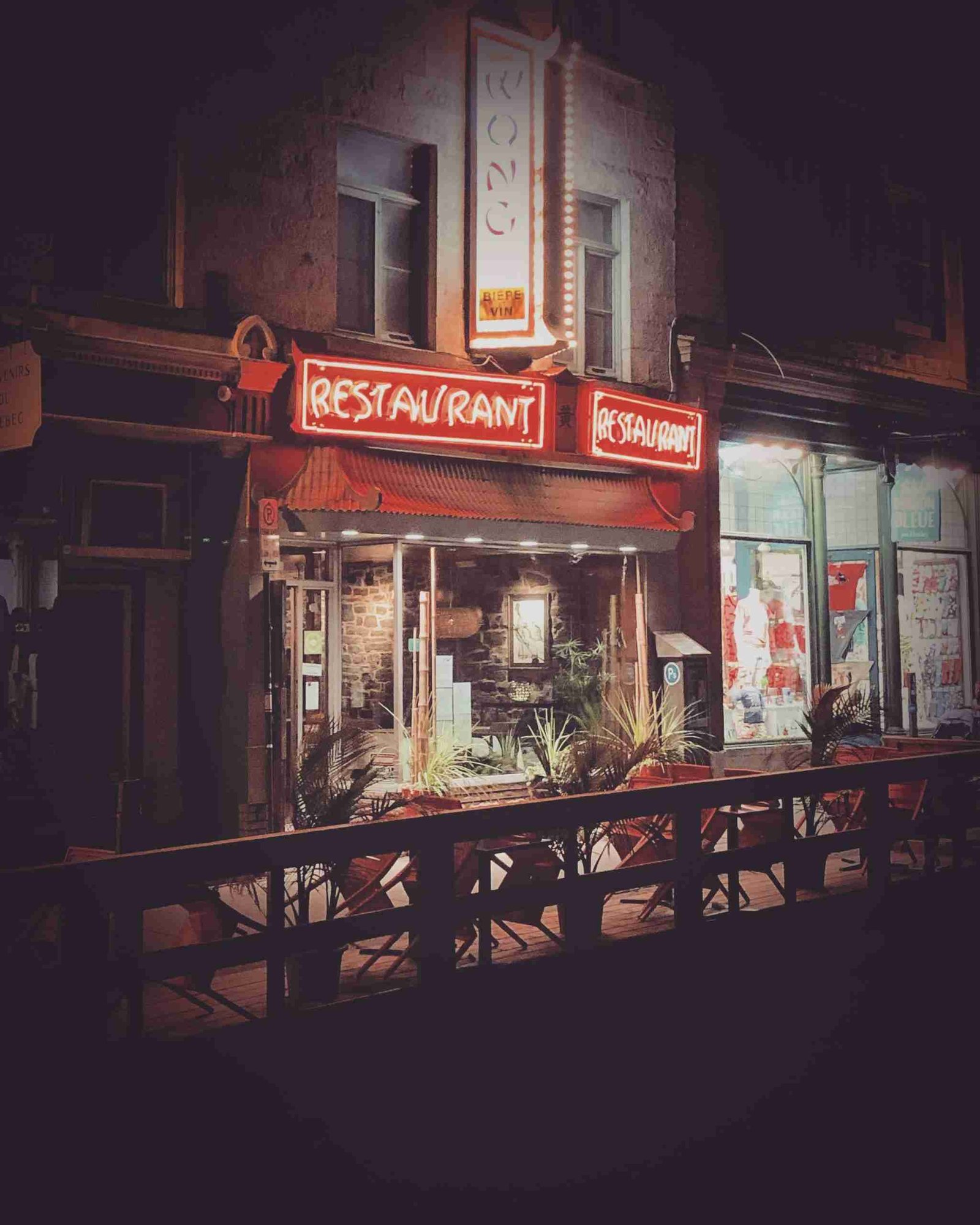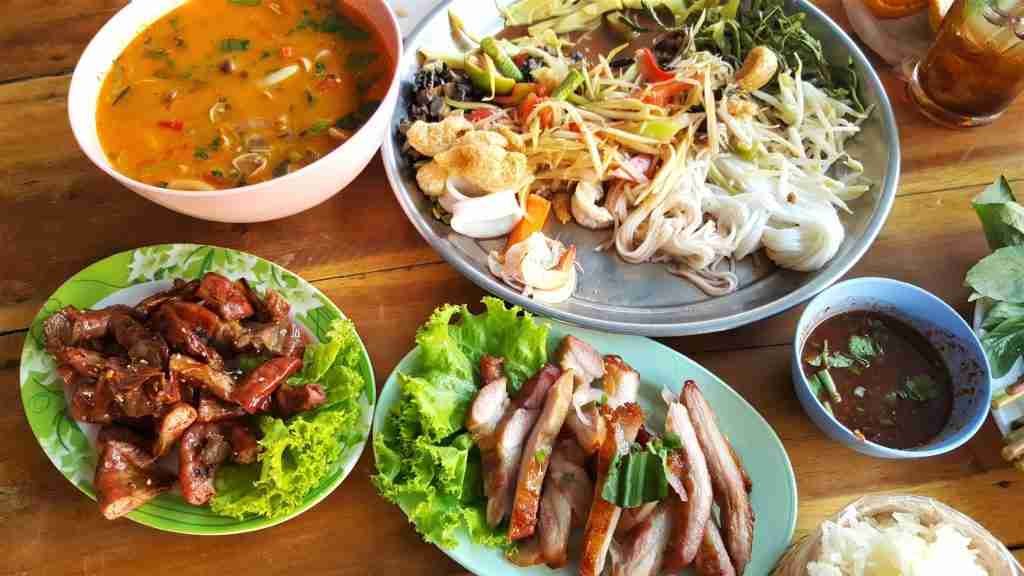
1. Poutine
Poutine, an iconic Quebec dish, is a delightful combination of crispy fries, fresh cheese curds, and rich gravy. This quintessential comfort food embodies the heart and soul of Quebec cuisine.
In Quebec City, poutine and seafood can be savored at numerous restaurants and food trucks across the province. Its availability of seafood makes it a convenient yet essential culinary experience for visitors exploring this vibrant destination.
The delectable blend of flavors and textures in poutine has made it a top choice among locals and tourists alike. The savory gravy melts the cheese curds to create a deliciously gooey indulgence that satisfies anyone’s taste buds.
Poutine’s popularity extends beyond just being a tasty treat; it represents the passion and pride that Quebecers have for their local cuisine. It has become synonymous with the province’s culinary identity, showcasing dishes and ingredients as an integral part of Quebec culture.
This classic dish perfectly encapsulates the hearty warmth and hospitality found in Quebec City’s top restaurants – making it an absolute must-try when visiting this charming city.
2. Tourtière
Tourtière is a traditional meat pie that boasts savory fillings such as pork, veal, game, and dishes. This iconic dish is deeply rooted in Quebecois culture and is often enjoyed during the holiday season in Quebec. The rich flavors and hearty ingredients make it a comforting and satisfying meal for locals and visitors alike.
This delectable pie can be found in local bakeries and eateries throughout Quebec City, offering an authentic taste of the region’s culinary heritage. It’s not uncommon to find variations of tourtière that incorporate locally sourced ingredients from the boreal forest, adding unique flavors to this classic dish.
The popularity of tourtière extends beyond its delicious taste; it also serves as a symbol of community and tradition within Quebecois families. Many households have cherished recipes passed down through generations, each with its own special blend of spices and meats.
During your visit to Quebec City, indulging in a slice of tourtière provides a window into the cultural tapestry of this vibrant city. Whether you savor it at a cozy bakery or prepare it yourself using an authentic recipe, this iconic meat pie offers a memorable culinary experience that captures the essence of Quebecois cuisine.
3. Bagels
Montreal-style bagels are a staple in Quebec City, known for their smaller size and sweet, dense dough. These delectable treats are typically hand-rolled, boiled in honey-sweetened water, and baked in wood-fired ovens to achieve their characteristic texture and flavor.
The city boasts numerous bakeries that specialize in crafting these iconic bagels. Visitors can indulge in an array of popular flavors including sesame seed and poppy seed varieties, each offering a unique taste experience.
One renowned establishment is the “St-Viateur Bagel,” which has been serving its delightful Montreal-style bagels since 1957. The bakery’s commitment to tradition and quality has made it a must-visit destination for locals and tourists alike.
Another notable spot is “Fairmount Bagel,” recognized as North America’s first bagel bakery using wood floors to bake its delicious creations. This historic landmark continues to draw crowds seeking an authentic taste of Montreal-style bagels.
When strolling through the streets of Quebec City, be sure to stop by one of these esteemed establishments or any other local bakery specializing in this beloved dish for an unforgettable gastronomic experience.
4. Smoked meat sandwich
Quebec City’s smoked meat sandwich is reminiscent of New York-style pastrami but with a unique blend of spices, offering a flavor profile distinct to the region. Served on rye bread with mustard and often accompanied by pickles, this iconic dish can be found at delis and eateries specializing in Montreal smoked meat.
This savory delight features beef brisket that has been marinated for days in a special mix of spices before being smoked to perfection. The result is tender, juicy meat bursting with rich flavors that are complemented by the tanginess of the mustard and pickles.
When strolling through Quebec City’s old town streets, visitors will encounter charming delis where they can savor this delectable meal amidst cozy settings characterized by brick walls and vintage menus. It’s not just about the food; it’s an experience steeped in tradition and history.
For those seeking an authentic taste of Quebec cuisine, exploring the city’s culinary scene offers a chance to indulge in local specialties like the smoked meat sandwich while immersing oneself in its vibrant culture.
5. Tire sur la neige
Tire sur la neige is a traditional Quebecois treat enjoyed during the sugaring off season in sugar shacks around Quebec City. It involves pouring hot maple syrup onto snow, which then forms a taffy-like consistency that is rolled onto a stick for a sweet snack.
This unique delicacy offers an authentic experience of Quebec’s culinary heritage, showcasing the significance of maple syrup in Canadian culture. The process of creating Tire sur la neige dates back centuries and remains cherished by locals and visitors alike.
During the sugaring off season, sugar shacks become lively hubs where people gather to indulge in this delightful treat while immersing themselves in the festive ambiance. This tradition not only celebrates the arrival of spring but also highlights the importance of maple syrup production in Quebec.
The combination of hot maple syrup meeting cold snow creates an interactive and memorable dining experience, making it a must-try for anyone visiting Quebec City during this time of year. It serves as an excellent example of how local ingredients are creatively utilized to produce distinct flavors deeply rooted in regional history.
6. Tarte au sucre
Tarte au sucre is a classic sugar pie renowned for its rich filling, which typically comprises cream, butter, and either maple syrup or brown sugar. This delectable dessert is a staple indulgence throughout Quebec City, offering locals and visitors alike a delightful combination of sweetness and creamy texture.
Served as both a dessert and a sweet treat, tarte au sucre embodies the essence of Quebecois culinary tradition with its simple yet decadent ingredients. The use of local maple syrup or brown sugar adds an authentic touch to this beloved dish, reflecting the region’s cultural heritage.
The pie’s creamy consistency combined with the sugary sweetness creates an irresistible flavor profile that has stood the test of time in Quebec City. Its popularity extends beyond just being another dessert on the menu; it represents a cherished part of the city’s gastronomic identity.
Whether enjoyed at one of the city’s quaint cafes or as part of a traditional home-cooked meal, tarte au sucre offers an experience that encapsulates Quebec City’s dedication to preserving its culinary heritage through simple yet unforgettable dishes.
7. Sugar Shack Plate
A sugar shack plate is a hearty meal that showcases traditional Quebecois dishes such as baked beans, ham, omelets, and pea soup. These plates are often served at sugar shacks during maple syrup season, offering visitors a festive dining experience in a rustic setting.
During the sugaring-off season, many local sugar shacks open their dining rooms to offer this authentic culinary experience. It’s an opportunity for both locals and tourists to indulge in the flavors of Quebec’s heritage while enjoying the picturesque surroundings of these establishments.
The sugar shack plate provides a genuine taste of regional cuisine and allows diners to immerse themselves in Quebec’s cultural traditions. The combination of savory and sweet flavors creates a unique gastronomic adventure that reflects the essence of Quebecois culinary identity.
8. Pouding chômeur
Pouding chômeur, which translates to “poor man’s pudding,” is a delectable dessert made with cake batter and a rich maple syrup sauce. This simple yet decadent treat encapsulates Quebec’s culinary heritage, showcasing the province’s love for maple-based dishes.
The dish can be found in numerous restaurants and bakeries across Quebec City, offering locals and visitors alike the opportunity to indulge in this traditional delicacy. Its humble origins are deeply rooted in Quebecois history, making it an essential part of experiencing the region’s gastronomic culture.
One key aspect that makes pouding chômeur stand out is its versatility. While it remains true to its classic recipe, many establishments have put their own unique spin on this beloved dessert, adding diverse flavors or presentation styles while preserving its authentic essence.
For those seeking a taste of tradition with a modern twist or simply wanting to explore the nuances of Quebecois cuisine, pouding chômeur presents itself as an ideal choice. Whether enjoyed as a standalone treat or paired with other local specialties, this dessert promises a delightful sensory experience that resonates with both locals and tourists.
9. Fèves au lard
Fèves au lard are slow-cooked baked beans infused with salt pork or bacon and sweetened with molasses or maple syrup, creating a rich and savory flavor profile that perfectly complements many traditional Quebecois dishes.
These beans have been a staple side dish in traditional Quebecois cuisine for generations, representing the region’s deep-rooted culinary traditions and historical influences.
In Quebec City, fèves au lard are often served alongside tourtière, a meat pie popular in the area, as well as other main dishes. The combination of flavors between the hearty beans and the savory meat pie offers a delightful taste of authentic Quebecois cuisine.
The use of local ingredients such as maple syrup from regional farms adds an extra layer of authenticity to this classic dish. This not only enhances its flavor but also supports local producers and sustains traditional agricultural practices.
10. Quebec Gin
Craft gins from local distilleries in Quebec City offer a unique blend of botanicals and flavors, reflecting the region’s growing artisanal spirits scene. These gins showcase the creativity and expertise of local distillers, making them a must-try for visitors to Old Québec.
At distillery tours, visitors can delve into the intricate process behind crafting these distinctive gins while sampling various flavors. This immersive experience allows enthusiasts to gain insight into the meticulous artistry that goes into producing each bottle.
Moreover, these craft gins are not only confined to distillery visits; they are also featured in cocktails at bars across Quebec City. The city’s vibrant bar scene offers an array of creative concoctions that incorporate locally made gin, providing an opportunity for tourists to savor this regional specialty in diverse and innovative ways.
Frequently Asked Questions
What is poutine?
Poutine is a classic Quebec dish consisting of crispy fries topped with cheese curds and smothered in rich gravy. It’s a delightful blend of textures and flavors, offering a savory, indulgent experience.
Where can I find the best tourtière in Quebec City?
For an authentic tourtière experience, head to traditional local bakeries or family-owned restaurants in Quebec City. These establishments often pride themselves on preserving the original recipes and flavors that make this meat pie so special.
What makes Tire sur la neige unique?
Tire sur la neige, also known as maple taffy, offers a unique culinary experience by pouring hot maple syrup onto fresh snow. The result is a sweet, chewy treat that captures the essence of Canadian winter traditions.
Can you recommend a place to try Pouding chômeur in Quebec City?
To savor the delectable Pouding chômeur dessert, consider visiting cozy bistros or eateries renowned for their dedication to crafting traditional Québécois sweets. These venues often excel at capturing the essence of this iconic dessert.
How can I sample authentic Quebec Gin while visiting Quebec City?
When exploring Quebec City’s culinary scene, seek out local distilleries and bars that showcase regional spirits. They provide an excellent opportunity to indulge in high-quality Québec-made gin while enjoying the city’s vibrant ambiance.



